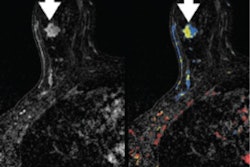Sunday, December 1 | 11:45 a.m.-11:55 a.m. | SSA01-07 | Room S406A
When radiologists use artificial intelligence (AI) with digital breast tomosynthesis (DBT), their cancer detection performance and efficiency improve, according to data to be presented Sunday morning.Presenter Dr. Emily Conant of the University of Pennsylvania in Philadelphia will share findings from a study conducted with colleagues that evaluated improvements in accuracy and reading time for 24 radiologists using AI with DBT for either digital mammography or synthesized 2D exams. Conant's team tracked the area under the receiver operating curve (AUC), sensitivity, specificity, and reading time.
The radiologists read 260 DBT exams with and without the help of AI: 195 exams included 2D digital mammography images (43 cancers) and 65 included synthesized 2D mammography images (22 cancers).
Conant's group found that AI improved radiologist performance for both 2D formats.
- The AUC improved from 0.781 for digital mammography plus DBT and 0.812 for synthesized mammography plus DBT without AI to 0.848 and 0.846 with AI, respectively.
- Sensitivity improved from 74% for digital mammography plus DBT and 84% for synthesized mammography plus DBT without AI to 83% and 90% with AI, respectively.
- Sensitivity improved from 66% for digital mammography plus DBT and 52% for synthesized mammography plus DBT without AI to 74% and 55% with AI, respectively.
The team also found that reading time improved 55.1% with the use of the AI software for digital mammography plus DBT and 44.4% with synthesized 2D mammography and DBT.
"Radiologist's breast cancer detection performance and efficiency improve with concurrent use of AI for DBT with digital or synthetic 2D," Conant's team concluded.




















